I recently bought a Konica Hexagon 17mm f/16 on Ebay. Maybe you haven’t heard of this lens before? I hadn’t either. It’s not the perfect lens, that’s for sure, but I’ve been having a lot of fun with – despite it ultimately not curing my GAS. However, given that this lens has more than a passing resemblance to certain famous lens, I hope this article might be of some interest to readers.
The Carl Zeiss Hologon, is a lens of legend, incredibly rare and the object of many a drool worthy Instagram post. Two versions of the lens were made, the first was in the 1960s, when Zeiss took the 15mm f8 lens from their Hologon camera and converted it to M mount. It is an ultra-rare lens, with only around 225 lenses produced, and at the time, before anything by Voitglander existed, it was the original super wide pancake lens.
Unfortunately, they are madly expensive, and cost upwards of £5,000. There is also a more affordable 16mm version of the Zeiss Hologon, at a mere 1500 pounds or so, which was produced for the Contax G1 and G2, and ones modified to M mount can often be found – Hamish reviewed one here. What makes this lens so special, is its optical performance, with near zero distortion, and yet is barely bigger than a lens cap.
So what has this got to do with this post? Well, like many of us during this time of lockdown, I have been perusing the internet and social media more than normal. Idle time has been feeding my GAS addiction, resulting in imagined outings with exotic lens lenses as the Hologon.
I am also probably not alone in enjoying the combination of a tiny fixed focus ultra-wide lens, that turns a camera into a pocketable point and shoot. I still remember fondly, the Olympus 9mm f8 bodycap lens I had on my old Olympus PEN EP-5. It was a fixed focus f8 lens, fisheye lens that could be easily de-fished and turned the camera into an 18mm point and shoot. Reviewers universally decry this lens as being terrible, but for travel use, it produced many a memorable image. At f8, everything from about half a meter is in focus and if you leave in aperture priority and auto iso, you can just focus on capturing the moment.
Perhaps with that in mind, I started thinking about a wide-angle lens for my current camera, my Leica M8. Personally, I find around 21mm to be the best compromise, wide enough to be interesting, but not too wide to be too difficult to use. My favourite focal lengths are 35mm and 50mm, so I find 21mm is my third go to focal length.
So, with the APS-H sensor of the Leica M8, which has a very slight crop, then for most people, the obvious choice is the Voigtlander 15mm. Yet being the obvious choice, was precisely why I was reluctant to go for it. Was there a more leftfield choice? Obviously the Hologon, being wincingly expensive was a nonstarter, and the MS-Optics 17mm also being rather expensive, I couldn’t see an obvious choice, until I stumbled on the Konica Hexagon 17mm f/16 on Ebay.
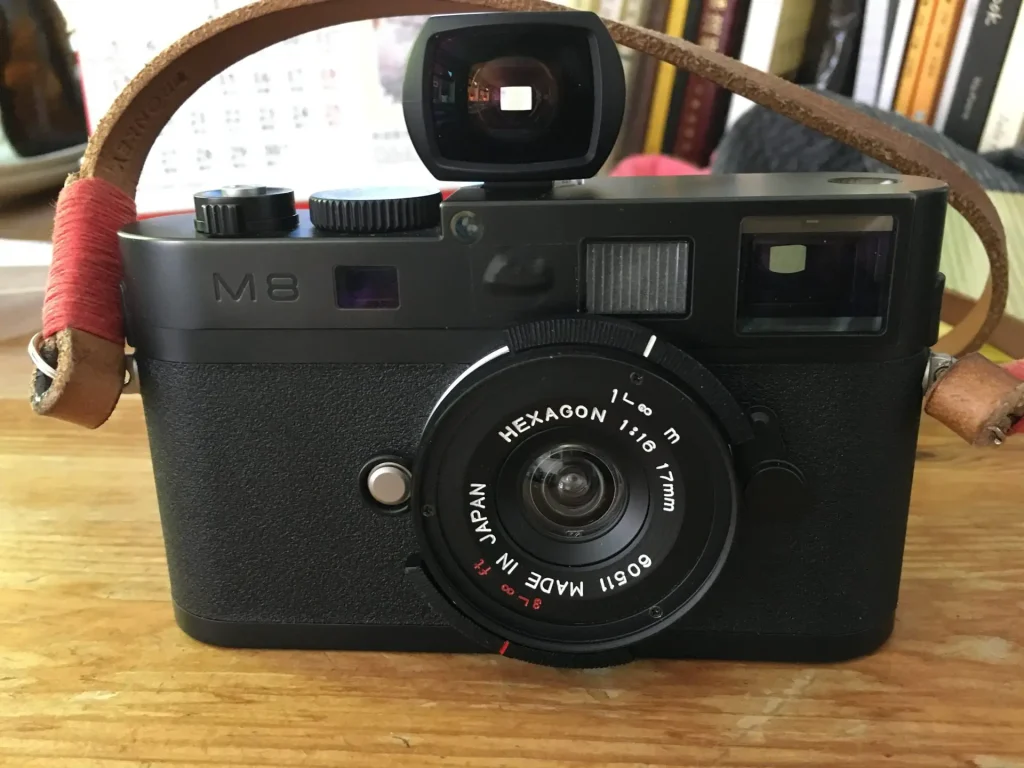
The Konica Hexagon 17mm f/16 is a tiny pancake LTM mount lens, sold by a couple of Japanese sellers. At first glance it looks to be modelled on the original 15mm Zeiss Hologon, but on closer inspection, it’s actually quite an interesting lens.
The optics are plastics and from a Konica WaiWai disposable camera. Now that is a bit of a cult camera, and one that Hamish himself reviewed a few years ago, and over the years, a few people have hacked the lens from this disposable camera. Now It seems that a small Japanese company, 60511, about 10 or so years ago, started professionally mounting the Konica WaiWai lens into a metal lens mount.
When you handle the Konica Hexagon 17mm, it’s actually very well made and quite solid. For reasons unknown, the original f/11 WaiWai lens has been changed to f/16, perhaps either for the aim of creating an ‘f16 look’ or perhaps stopping the lens down to f/16 improves the quality. There is very little information available about this lens, and most seems to be either in Japanese or in Chinese, where it has a small following in Hong Kong.
From what I can glimmer, on a full frame Leicas such as the M9, the Konica Hexagon 17mm vignettes a bit, but on the Leica M8 and Epson Rd-1, it’s actually quite useable in bright sunlight, and produces very distinctive images. The lens costs around £200, which some might consider a lot for a plastic f/16 lens, albeit in a custom-made metal lens mount; but equally, its not too much for a fun, occasional use lens.
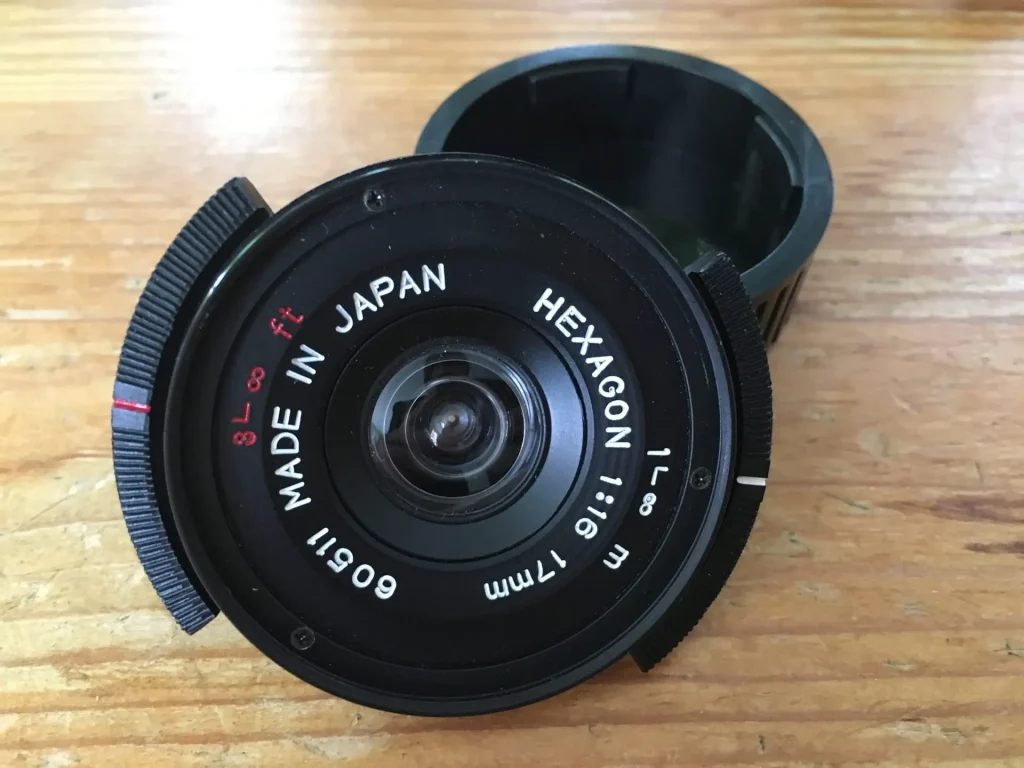
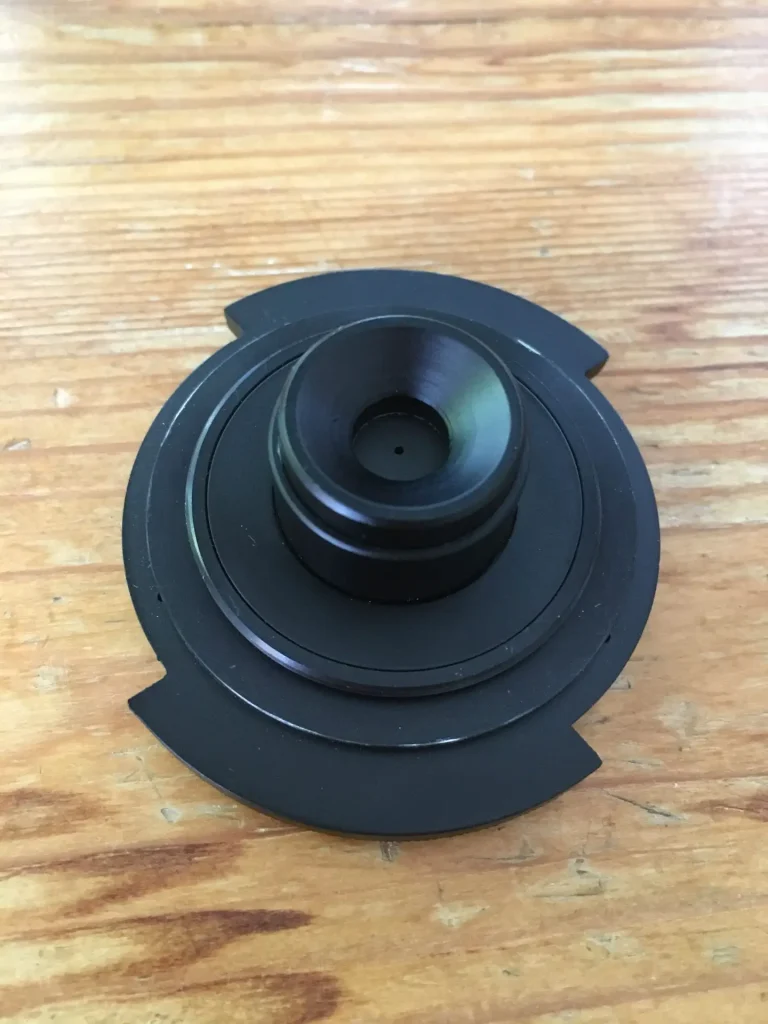
So, what is the Konica Hexagon 17mm actually like to use? Well actually surprisingly good. It has a quality feel, and once paired with a m-mount adapter, snuggly fits on my M8. What is more surprising, is that there is no colour cast or magenta corners. Given how tricky ultra-wide lenses are on Leicas, I was really expecting problems, yet on the M8, no issues.
Secondly, the colours are very bold and bright. Now this is where personal taste comes in, but I actually quite like the colour rendition of the lens. At f/16, the colours are very strong, almost Lomo like, and are strong and bold, but also warm. Obviously, the lens isn’t sharp, but equally it behaves better than you would expect for a plastic lens.
The main caveats of the Konica Hexagon 17mm being at f/16, you need bright sunshine (or else a high iso, something the Leica M8 doesn’t have), and lens flare. As Hamish found out when he shot film on the WaiWai, this lens flares horribly, and as the sample photo shows, if you point it into direct sunlight, it can be unusable at times. Yet, if you are careful and avoid flare, it can take some really quite good images.
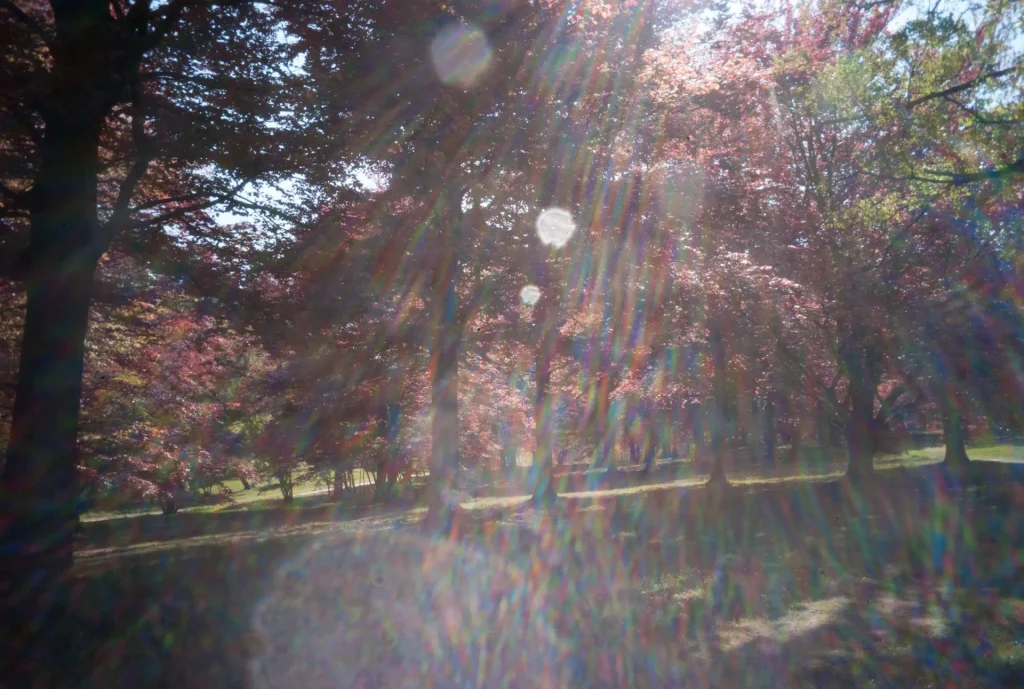
All the Konica Hexagon 17mm sample images were taken from the Valley Gardens in Windsor Great Park. Apart from being a beautiful place, it is currently one of the few places where we can walk to during the outbreak. Once things are back to normal, I highly recommend visiting.
Anyway, all the photographs are from recent walks there during a warm spell. The photos have also been lightly edited in Lightroom. I found that adding a lens profile (21mm Zeiss) and lightly sharpening the images tones down the Lomography look of the photos, and I’m actually quite pleased with some of the images, given that I am by no means a good photographer, just a person who enjoys their hobby. The lens makes the Leica incredibly light to carry, and it is quite liberating to be able to just point and shoot.
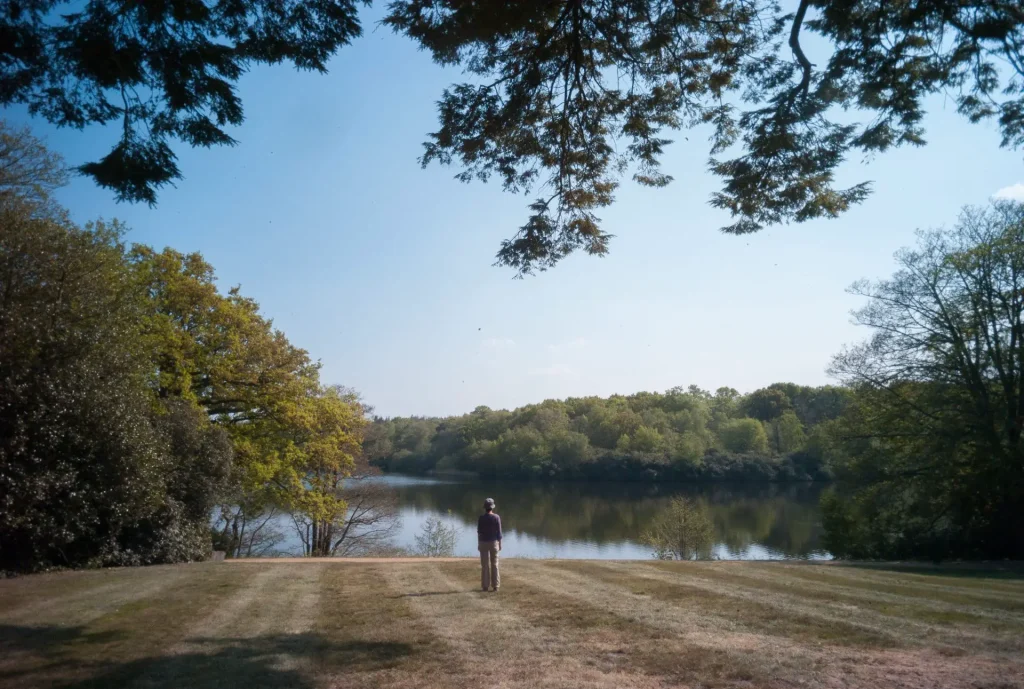
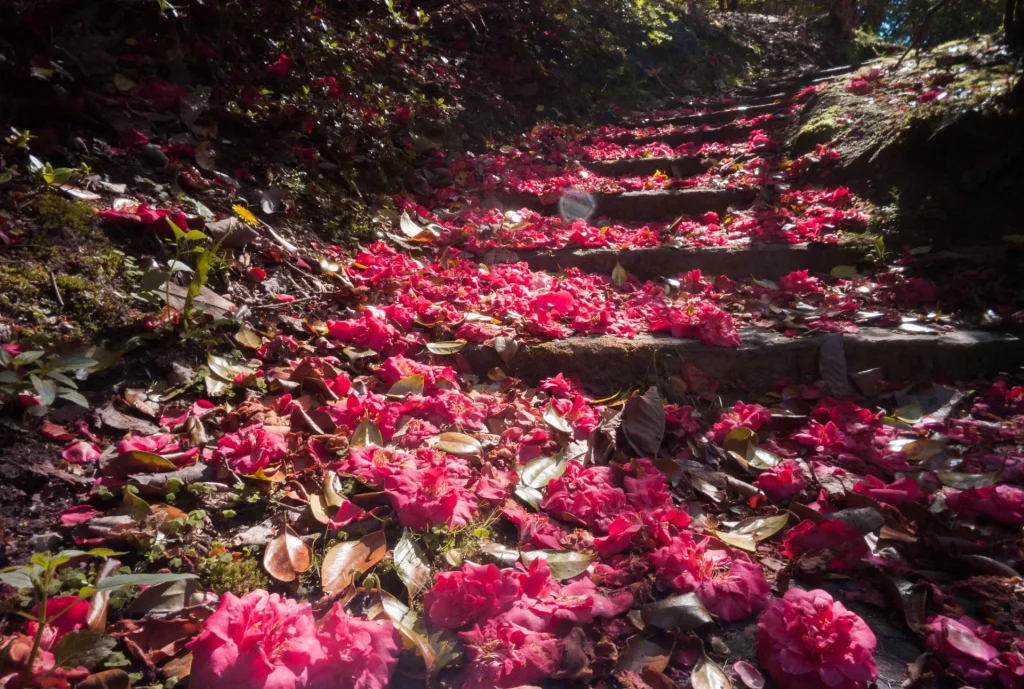
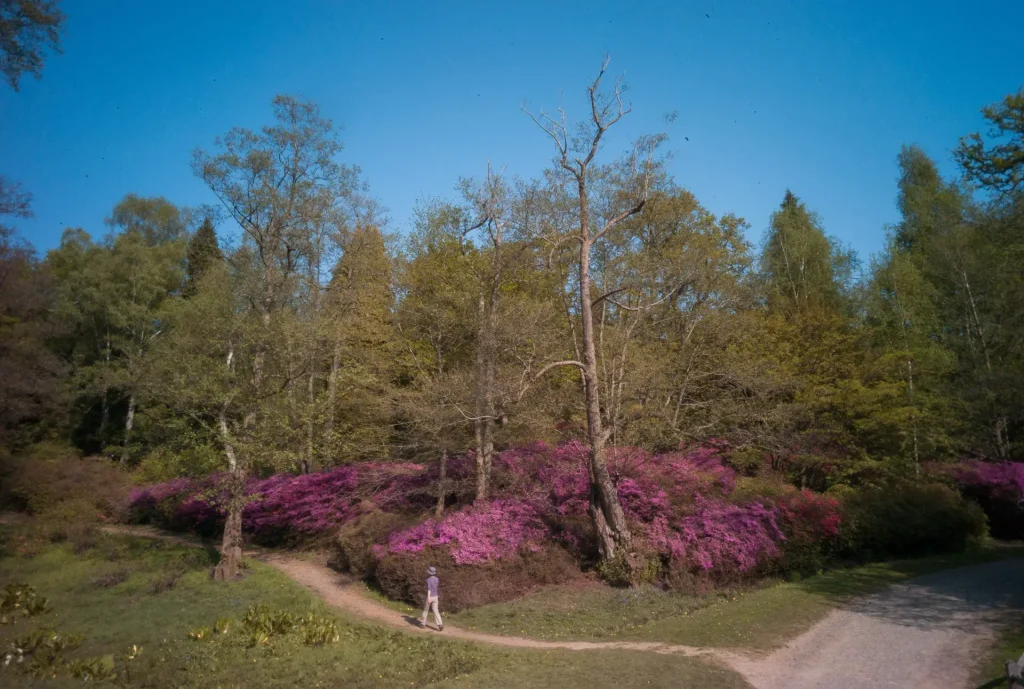
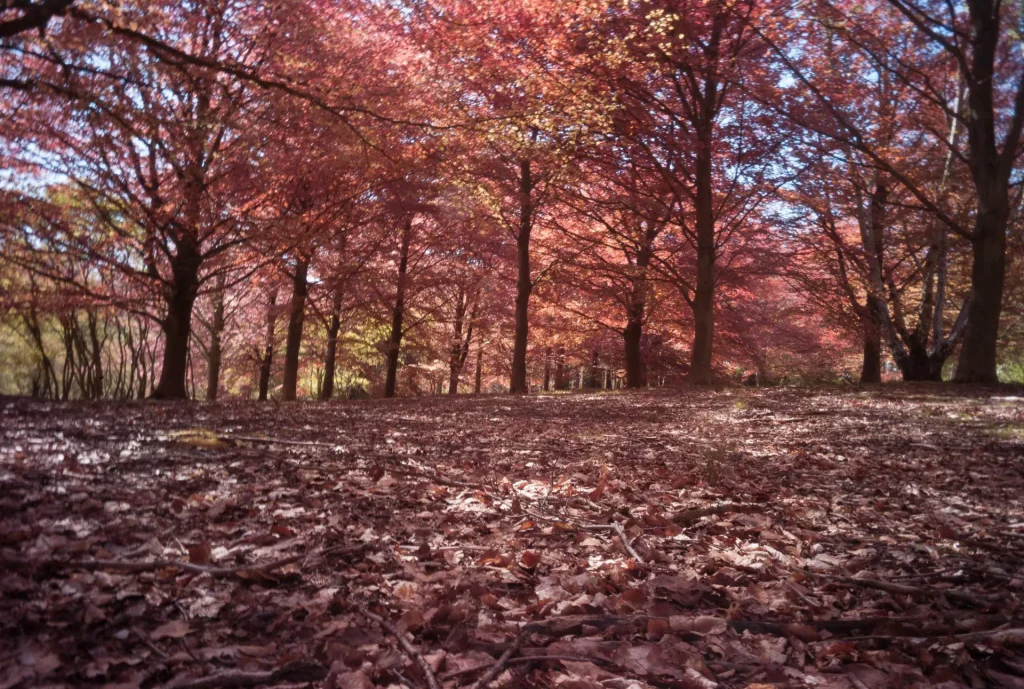
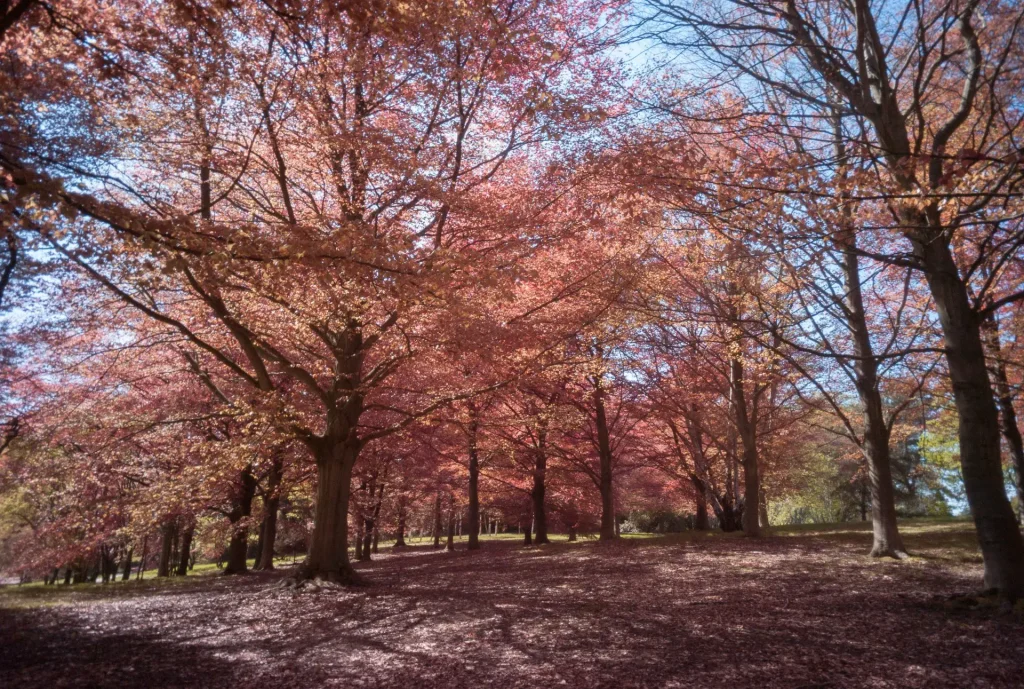
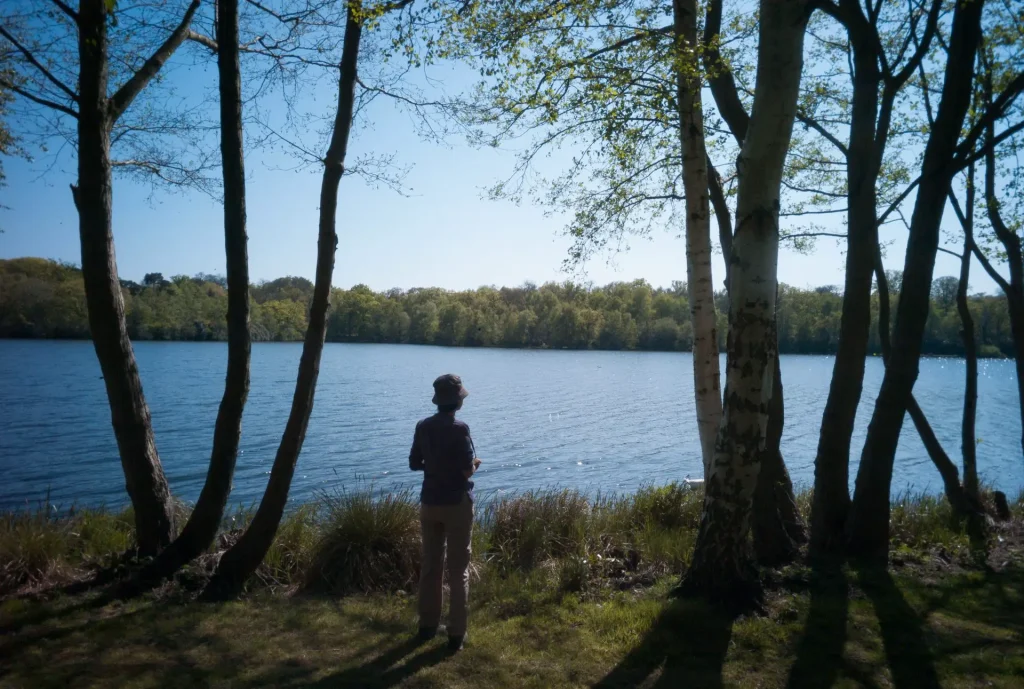
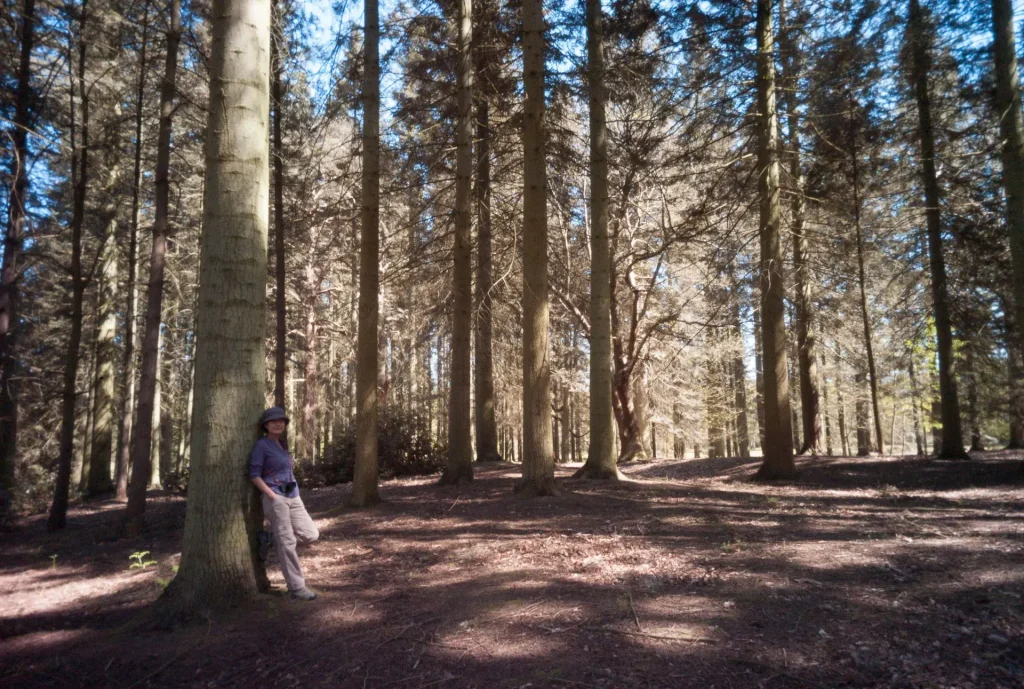
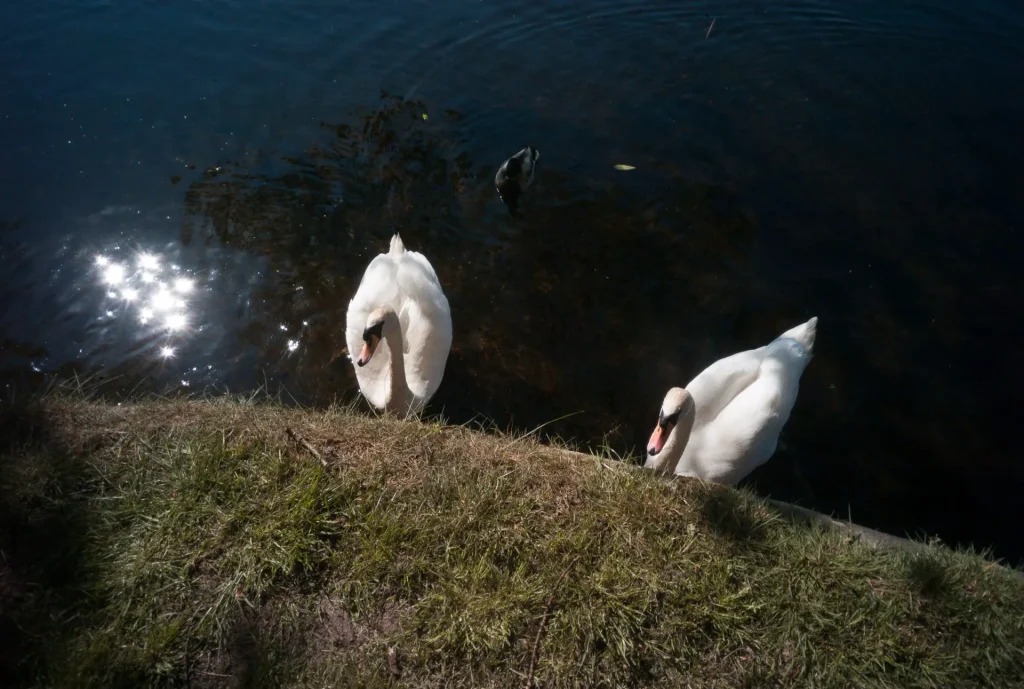
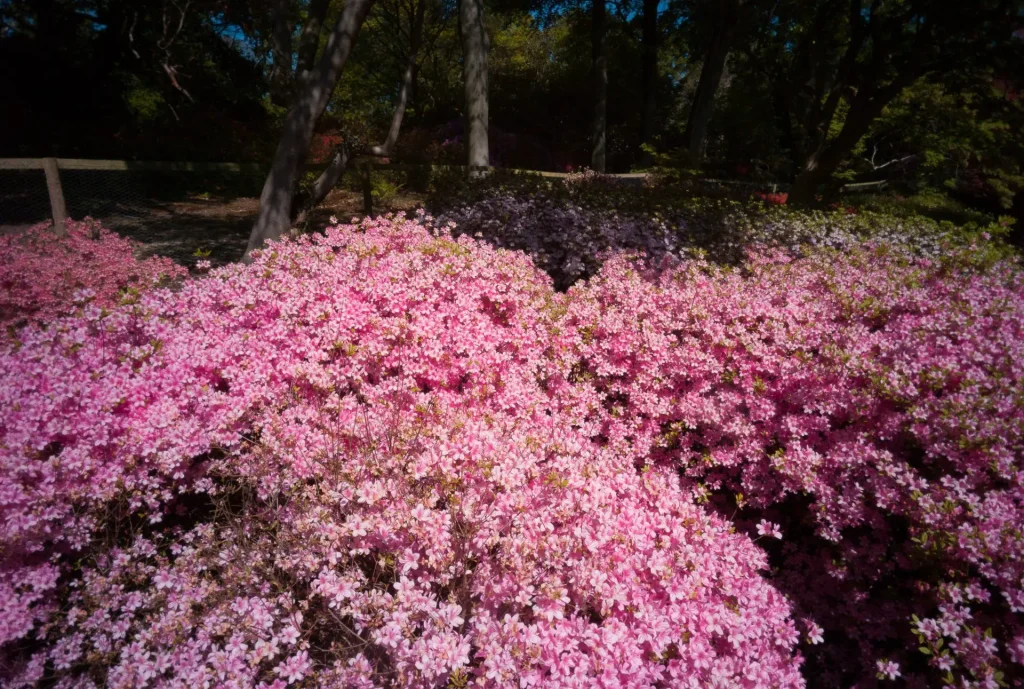
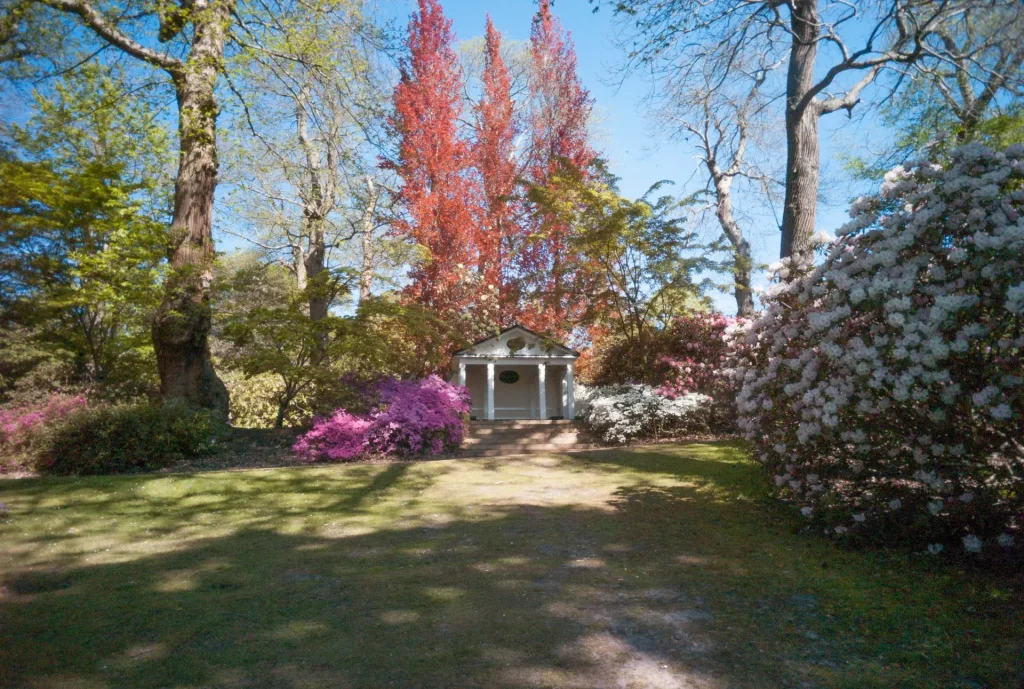
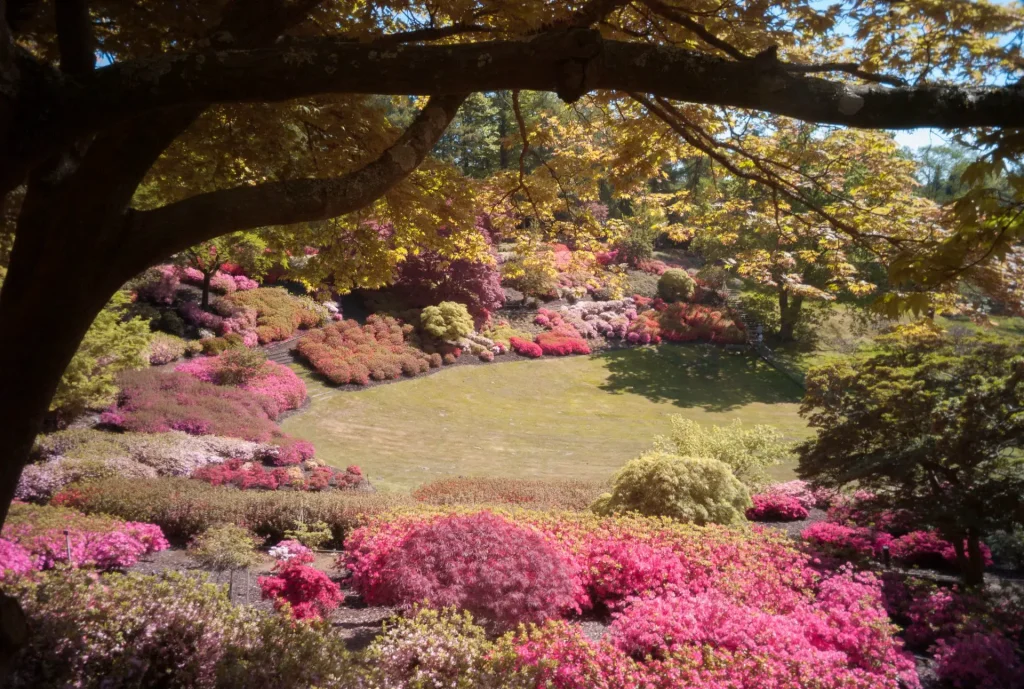

So overall, would I recommend the Konica Hexagon 17mm f/16 lens? Are you a Leica perfectionist? If so, then no, don’t buy this lens and quickly forget this article. But, If you are looking for a fun lens, and something that given its f/16 aperture, you don’t mind only using in bright light, then this might be worth having as a fun item.
Given that this was originally a plastic lens in a disposable camera, in the right conditions, it’s actually way better than you would expect. Has it been a fun buy? Absolutely. Have I enjoyed using it? Definitely. Has it cured my GAS? Er. No. What is has shown is how much I like that focal length and tiny pancake lenses.
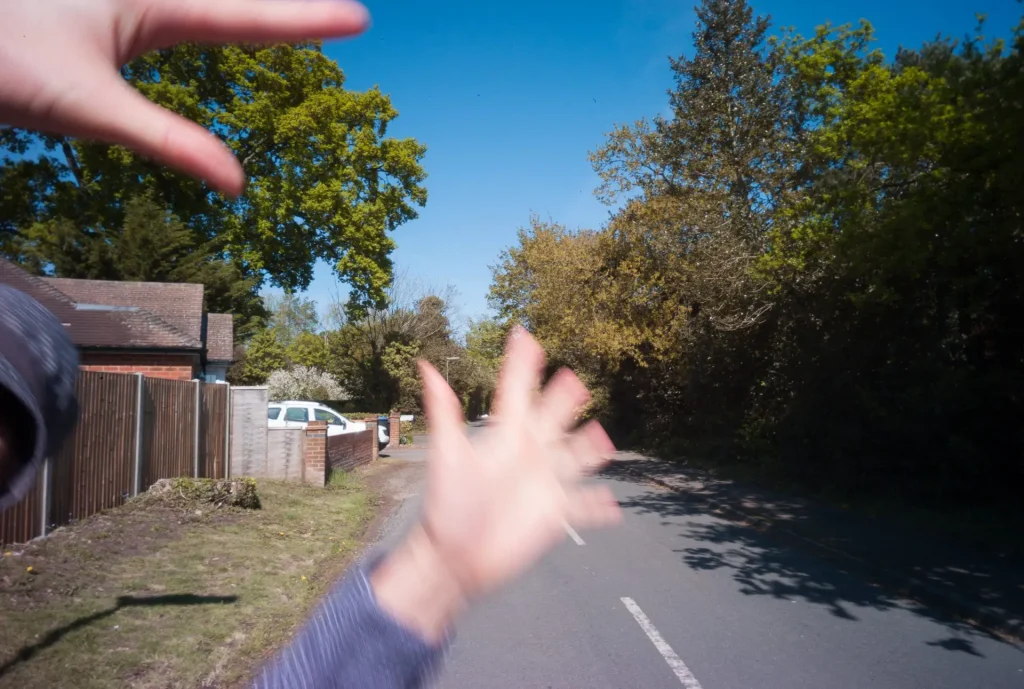
As a result, I have found a good deal on an MS-Optics Perar 17mm f4.5 lens. Same focal length, set to f8 and, fingers crossed, even better. So, is the Konica Hexagon 17mm a poor man’s hologon? Obviously it’s not Zeiss quality, but it’s certainly not plastic rubbish, and given that it has to be used with an external viewfinder and used in the same manner as the legendary original from which it pays homage to, then yes, it could be argued to be a ‘poor man’s hologon’, maybe.
Share this post:
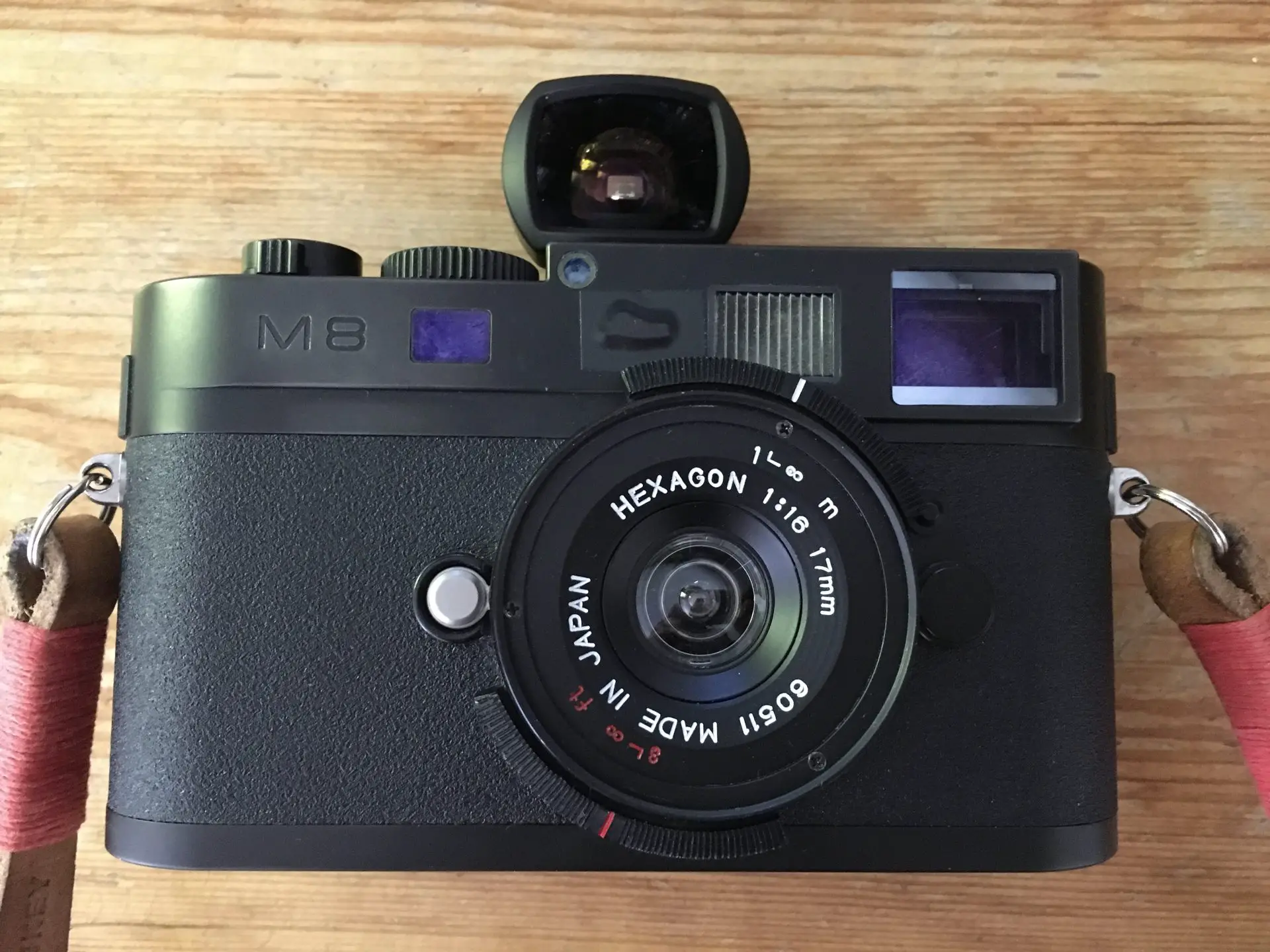








Comments
Roger B. on Konica 17mm f/16 Hexagon Lens Review – Plastic Fantastic or a Poor Man’s Hologon? – By Simon Kimber
Comment posted: 01/07/2020
Comment posted: 01/07/2020
Grant on Konica 17mm f/16 Hexagon Lens Review – Plastic Fantastic or a Poor Man’s Hologon? – By Simon Kimber
Comment posted: 05/12/2020
This is a lens probably made by a Chinese (Korean, Vietnamese?) third-party wishing to cash in on the Konica name, hence the similarities in brand names. The Hong-Kong dealer on eBay advertising it as a Konica lens is guilty of misrepresentation. Best.
Grant
Comment posted: 05/12/2020